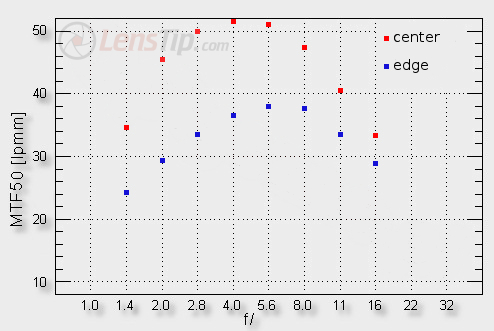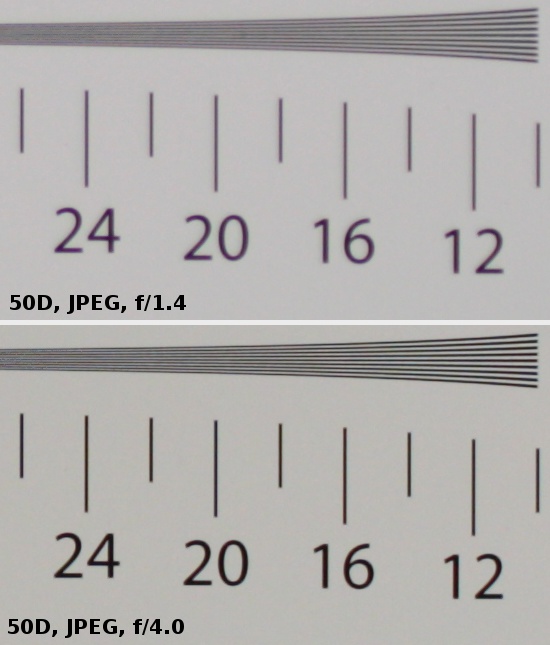Sigma A 30 mm f/1.4 DC HSM
4. Image resolution
Let’s check how the tested lens compares here. The graph below shows its MTF50 values depending on the aperture values, for the centre and the edge of the frame.

Please Support UsIf you enjoy our reviews and articles, and you want us to continue our work please, support our website by donating through PayPal. The funds are going to be used for paying our editorial team, renting servers, and equipping our testing studio; only that way we will be able to continue providing you interesting content for free. |
- - - - - - - - - - - - - - - - - - - - - - - - - - - - - - - - - - - - - - - - - - - - - - - -
At the maximum relative aperture the image you get is on the borderline of the usefulness level – its assessment depends strongly on the demands and taste of the user. Not especially demanding photographers might consider it as good and useful, more demanding ones can turn their nose up at it. Fortunately on stopping down the aperture the image quality improves steeply. By f/2.0 the MTFs reach almost 46 lpmm which enables you to speak about an image of a very high quality. Sensational results you get by f/2.8-5.6 – the level of 50-52 lpmm is worth even the best “primes” of any system. At higher apertures only diffraction remains as the major limiting factor.
Compared to the performance of the predecessor there is an improvement here. As at the maximum relative aperture the results are more or less alike, because the older Sigma also oscillated near the usefulness borderline; the stopping down is much more effective in the new model, improving the image quality very fast. Near f/5.6 the results of both Sigma devices once again become similar.
The situation we observe at the edge of the frame is much worse though. The image is evidently not very useful by f/1.4 and f/2.0 and only after using f/2.8 aperture you can talk about acceptable images. Although the situation here is not as good as that in the centre still, compared to the predecessor, you can notice a distinct improvement – the older lens was fully useful from f/5.6.
To sum up: the noticeably better resolution results, especially if compared to an already good older lens, are an evident asset. A fly in the ointment for the Sigma might be the performance of e.g. the Nikkor AF-S DX 35 mm f/1.8G which, although slower, near the maximum relative aperture could fare better in the centre and on the edge of the frame as well.
Below we present some crops taken from photos of our testing chart which were saved as JPEG files along with RAW files.
 |






